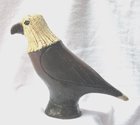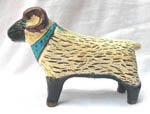Smithsonian's National Museum of the American Indian Celebrates American Indian and Alaska Native Heritage Month
Contact: Amy Drapeau, 202-633-6614 or drapeaua@si.edu; Leonda Levchuk, 202-633-6613 or levchukl@si.edu, both of the Smithsonian Institution; Public only: 202-633-1000
WASHINGTON, Oct. 10 /U.S. Newswire/ -- To celebrate American Indian and Alaska Native Heritage Month in November, the Smithsonian's National Museum of the American Indian in Washington, D.C., will host a variety of free public programs.
Panel Discussion: On Friday, Nov. 3, at 7 p.m. in the Rasmuson Theater, a panel discussion will be held on "Indigenous Archaeology: Respecting Objects, History and Place."
Dance Performance: The Lepquinm Gumilgit Gogoadim (Our Own Dance in Our Hearts) Dance Group from Alaska, will present heritage songs and dances from the Tsimshian culture Friday, Nov. 3 through Sunday, Nov. 5, at 10:30 a.m. and noon in the Rasmuson Theater.
Storytelling: Hope and Company, led by Ishmael Hope (Inupiaq/Tlingit) and storytellers, will share stories about Alaska Native heritage Tuesday, Nov. 7 through Thursday, Nov. 9 and Saturday, Nov. 11 and Sunday, Nov. 12, at 2 and 3:30 p.m. in the Rasmuson Theater.
Art Demonstration: David Boxley (Tsimshian) will demonstrate the art of wood carving from Friday, Nov. 10 through Sunday, Nov. 12 at 11 a.m., 1 and 3 p.m. in the Potomac Atrium.
Family Day: A Family Day program on "North Pacific Coast Weaving Traditions" will take place Saturday, Nov. 11, from 10:30 a.m. to 3 p.m. in the Education Workshop on the third level. Tlingit weaver Lorene Boxley will talk about Tlingit women's weaving and participants will have an opportunity to create their own mat or basket to take home.
Performance: Tobias Vanderhoop (Aquinnah Wampanoag) will present "A Wampanoag Thanksgiving" Tuesday, Nov. 14 through Thursday, Nov. 16, at 10:30 a.m., 1 and 3 p.m. in the Rasmuson Theater. Through story, song, drumming and dance, visitors will learn how Wampanoags traditionally offered thanks before contact with non- Natives.
Film: "Stolen Spirits of Haida Gwaii" will be screened in the Rasmuson Theater Friday, Nov. 24, at 7 p.m. and Saturday, Nov. 25, at 1:30 p.m.
All programs are subject to change, for a complete schedule of public programs, visit http://www.AmericanIndian.si.edu .

























